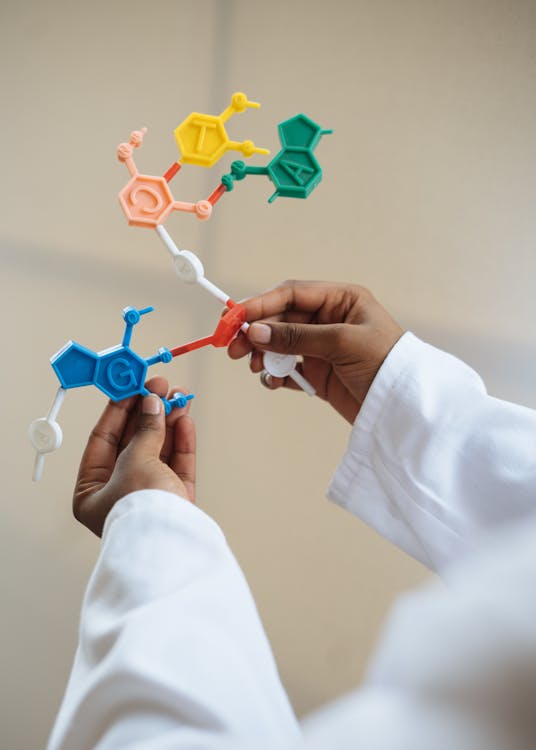Introduction
The regulatory landscape for oligonucleotide-based products has evolved significantly in recent years, reflecting both the growing clinical success of these therapies and regulators' increasing experience with this unique class of molecules. As oligonucleotide therapeutics transition from scientific curiosities to approved medicines, understanding the regulatory framework is essential for successful development and commercialization. This article provides a comprehensive overview of the key regulatory considerations for oligonucleotide products, focusing on therapeutics while also addressing diagnostics and research applications.
Regulatory Classification and Pathways
Oligonucleotide products can fall under different regulatory classifications depending on their intended use, structure, and mechanism of action.
Therapeutic Oligonucleotides
Therapeutic oligonucleotides are regulated as drugs or biologics, depending on the jurisdiction:
- United States: Most synthetic oligonucleotides are regulated as drugs by the FDA's Center for Drug Evaluation and Research (CDER). Approval pathways include New Drug Applications (NDAs) for small molecule drugs and Biologics License Applications (BLAs) for products classified as biologics.
- European Union: The European Medicines Agency (EMA) typically classifies oligonucleotides as chemical entities, though some complex formulations may be considered biological medicinal products.
- Japan: The Pharmaceuticals and Medical Devices Agency (PMDA) generally follows similar classification principles to the FDA, with most synthetic oligonucleotides classified as drugs.
Diagnostic Oligonucleotides
Oligonucleotides used in diagnostic applications are typically regulated as:
- In Vitro Diagnostic Devices (IVDs): Governed by specific regulations such as the FDA's medical device regulations (21 CFR Part 809) in the US and the In Vitro Diagnostic Regulation (IVDR) in the EU.
- Components of Laboratory Developed Tests (LDTs): Subject to varying degrees of oversight depending on the jurisdiction.
Research-Use Oligonucleotides
Oligonucleotides intended solely for research purposes generally have minimal regulatory requirements but must be clearly labeled as "not for diagnostic or therapeutic use" and sold only to appropriate research facilities.

Manufacturing Regulatory Requirements
The manufacturing of oligonucleotide products for clinical or commercial use must comply with Good Manufacturing Practice (GMP) regulations:
GMP Compliance
Key GMP considerations specific to oligonucleotide manufacturing include:
- Facility Design and Controls: Clean room classifications, environmental monitoring, and contamination prevention strategies appropriate for oligonucleotide synthesis.
- Process Validation: Demonstration of process consistency and control, with particular attention to critical process parameters that affect oligonucleotide quality.
- Analytical Method Validation: Validation of methods for identity, purity, strength, and quality according to ICH Q2(R1) guidelines.
- Starting Material Control: Qualification of suppliers and testing of nucleoside phosphoramidites and other critical raw materials.
- Scale-Up Considerations: Demonstration of comparability when transitioning from small-scale to commercial-scale manufacturing.
Manufacturing Documentation
Comprehensive documentation requirements include:
- Master Batch Records: Detailed manufacturing instructions with appropriate controls and acceptance criteria.
- Standard Operating Procedures (SOPs): Covering all aspects of manufacturing, testing, and quality systems.
- Validation Protocols and Reports: For process, cleaning, analytical methods, and computerized systems.
- Change Control System: Procedures for managing and documenting changes to validated processes.
Preclinical Development Considerations
Preclinical studies for oligonucleotide products have unique considerations:
Toxicology Studies
Regulatory authorities typically expect:
- Class-Specific Effects: Assessment of known class effects such as complement activation, immunostimulation, and kidney accumulation.
- Sequence-Specific Effects: Evaluation of potential off-target hybridization and unintended gene modulation.
- Species Selection: Careful justification of relevant animal models based on pharmacological activity and sequence homology.
- Duration: Study durations that account for the prolonged tissue half-life of many oligonucleotides.
Pharmacokinetics and Biodistribution
Key considerations include:
- Tissue Distribution: Comprehensive assessment of tissue accumulation, particularly in the liver and kidneys.
- Metabolite Profiling: Characterization of metabolic pathways and major metabolites.
- Analytical Methods: Development of sensitive and specific methods for detecting the oligonucleotide and its metabolites in biological matrices.
"The regulatory path for oligonucleotide products requires strategic planning and early engagement with authorities. Understanding the evolving expectations for this unique class of molecules is key to successful development."
— Robert Garcia, Chief Operations Officer, Girindus
Clinical Development and Approval
Clinical development of oligonucleotide therapeutics involves several regulatory considerations:
Clinical Trial Applications
Preparation of robust regulatory submissions requires:
- Investigational New Drug (IND) Application (US): Comprehensive documentation including CMC information, preclinical data, and clinical protocols.
- Clinical Trial Application (EU): Similar to the IND but with region-specific requirements and formats.
- Common Technical Document (CTD) Format: Organization of data according to the harmonized CTD structure for efficient global submissions.
Expedited Programs
Many oligonucleotide therapies may qualify for accelerated development and review pathways:
- Orphan Drug Designation: Available for products treating rare diseases, providing benefits such as market exclusivity and reduced fees.
- Fast Track and Breakthrough Therapy Designations (US): Offering enhanced interaction with the FDA and potentially expedited review.
- PRIME (EU): The EMA's PRIority MEdicines scheme providing early and enhanced support for promising therapies.
- Accelerated Assessment (EU): Reducing the standard review timeline for products of major public health interest.
Post-Approval Requirements
After approval, oligonucleotide products typically face:
- Risk Management Plans: Strategies to monitor and mitigate identified and potential risks specific to the oligonucleotide modality.
- Post-Marketing Commitments: Additional studies to further characterize long-term safety and efficacy.
- Manufacturing Changes: Protocols for managing and reporting post-approval manufacturing changes.

Chemistry, Manufacturing, and Controls (CMC)
The CMC section of regulatory submissions for oligonucleotide products requires specific considerations:
Drug Substance Characterization
Comprehensive characterization includes:
- Structural Characterization: Sequence confirmation, molecular weight determination, and identification of modifications.
- Impurity Profiling: Identification and quantification of process-related impurities (e.g., failed sequences, depurinated products) and product-related impurities (e.g., diastereoisomers).
- Physicochemical Properties: Solubility, pH stability, thermal stability, and other relevant parameters.
- Reference Standards: Establishment and qualification of reference materials for testing.
Specifications and Analytical Procedures
Development of appropriate specifications involves:
- Acceptance Criteria: Scientifically justified limits for identity, purity, strength, and quality attributes.
- Method Validation: Validation according to ICH guidelines, with particular attention to specificity for closely related impurities.
- Stability-Indicating Methods: Development of methods capable of detecting degradation products under stressed conditions.
Stability Studies
Stability programs should address:
- ICH Conditions: Long-term, accelerated, and stress testing according to ICH Q1A(R2).
- Oligonucleotide-Specific Degradation: Monitoring of depurination, backbone cleavage, and other oligonucleotide-specific degradation pathways.
- Formulation Stability: Compatibility with excipients and delivery systems.
- Photostability: Assessment according to ICH Q1B, particularly important for some modified nucleosides.
Drug Product Considerations
For formulated oligonucleotide products:
- Formulation Development: Justification of excipients, compatibility studies, and optimization of delivery characteristics.
- Manufacturing Process: Validation of aseptic processing for sterile products and control of critical process parameters.
- Container Closure System: Suitability testing and extractables/leachables assessment.
Global Regulatory Harmonization and Differences
While there is significant harmonization through the International Council for Harmonisation (ICH), important regional differences exist:
United States (FDA)
Notable FDA-specific considerations include:
- PDUFA Goals: Predictable review timelines under the Prescription Drug User Fee Act.
- Advisory Committees: Public meetings where independent experts provide recommendations on approval decisions.
- Special Protocol Assessments: Agreements with sponsors on pivotal study designs.
- Expedited Programs: Multiple pathways for accelerated development and review.
European Union (EMA)
The EU regulatory landscape features:
- Centralized Procedure: Required for most innovative products, providing approval across all EU member states.
- Scientific Advice: Formal mechanism for obtaining regulatory guidance before and during development.
- Pediatric Investigation Plans: Mandatory plans for pediatric development, with few exceptions.
- Environmental Risk Assessment: Required assessment of potential environmental impacts.
Japan (PMDA)
Key considerations for Japan include:
- Ethnic Factors: Potential need for bridging studies in Japanese patients.
- Prior Assessment Consultation: Formal consultation mechanism for reviewing data before official submission.
- SAKIGAKE Designation: Japan's expedited review pathway for innovative products.
International Council for Harmonisation (ICH)
Relevant ICH guidelines include:
- Quality Guidelines: Q1-Q14 series covering stability, analytical validation, impurities, etc.
- Safety Guidelines: S1-S11 series addressing preclinical safety evaluation.
- Efficacy Guidelines: E1-E19 series covering clinical trial design and reporting.
- Multidisciplinary Guidelines: M1-M10 series, including the CTD format (M4).
Emerging Regulatory Trends
Several trends are shaping the future regulatory landscape for oligonucleotide products:
Platform Approaches
Regulatory authorities are increasingly recognizing the potential for platform-based development:
- CMC Streamlining: Potential for leveraging CMC information across products with the same backbone chemistry and manufacturing process.
- Nonclinical Data Leveraging: Using existing toxicology data to support new candidates with similar chemical structures.
- Master Protocols: Adaptive clinical trial designs that can evaluate multiple candidates efficiently.
Advanced Manufacturing Technologies
Regulatory frameworks are evolving to accommodate innovative manufacturing approaches:
- Continuous Manufacturing: Regulatory guidance for implementation of continuous processes.
- Process Analytical Technology (PAT): Real-time quality control approaches.
- Digitalization: Electronic submission systems and data integrity requirements.
Novel Delivery Systems
Regulatory considerations for emerging delivery technologies include:
- Lipid Nanoparticles: Characterization requirements and safety assessment considerations.
- Conjugate Approaches: Regulatory frameworks for oligonucleotide-conjugate products.
- Combination Products: Coordination between drug and device regulatory pathways for novel delivery devices.
Practical Strategies for Regulatory Success
Based on industry experience, several strategies can enhance regulatory success:
Early Regulatory Engagement
Proactive interaction with regulatory authorities is crucial:
- Pre-IND/Scientific Advice Meetings: Obtaining feedback on development plans before significant investments.
- End-of-Phase 2 Meetings: Aligning on pivotal trial designs and registration strategies.
- Special Protocol Assessments: Securing agreement on pivotal study designs where applicable.
Integrated Development Planning
Coordination across functional areas is essential:
- Target Product Profile: Developing a clear vision of the desired product characteristics and labeling.
- Global Development Strategy: Planning for multi-regional development from the outset.
- Lifecycle Management: Anticipating post-approval developments and extensions.
Risk-Based Approaches
Implementing risk management throughout development:
- Quality by Design: Systematic approach to development based on predefined objectives and risk assessment.
- Critical Quality Attributes: Identification and control of product characteristics with the greatest impact on safety and efficacy.
- Risk Management Plans: Proactive strategies to monitor and mitigate identified risks.
Conclusion
The regulatory landscape for oligonucleotide products continues to evolve as these innovative therapies advance through development and commercialization. While the fundamental principles of pharmaceutical regulation apply, the unique characteristics of oligonucleotides necessitate specific considerations throughout the development process.
At Girindus, our experience in oligonucleotide manufacturing and regulatory affairs enables us to navigate these complexities effectively. We work closely with our clients to develop robust regulatory strategies tailored to their specific products and target markets. By staying abreast of evolving regulatory expectations and maintaining open communication with authorities, we help ensure that innovative oligonucleotide products can reach patients efficiently while meeting the highest standards of safety, efficacy, and quality.
As the field continues to advance, we anticipate further refinement of regulatory approaches, with increased harmonization across regions and potentially more streamlined pathways for platform-based oligonucleotide products. Through proactive engagement with regulatory authorities and thoughtful, science-based approaches to development, the industry can work collaboratively with regulators to bring these important therapies to patients in need.




